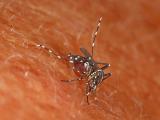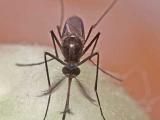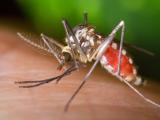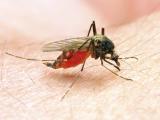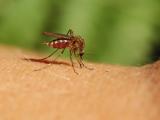Sep 7, 2012 (CIDRAP News) – The surge in West Nile virus (WNV) infections in many states over the summer led to a temporary shortage of diagnostic test kits that at one point halted testing at some commercial and local labs and led one state to warn health providers to reserve the tests for the most seriously ill patients.
Lola Russell, a spokeswoman for the US Centers for Disease Control and Prevention (CDC), said that early in the week of Aug 27 several state public health labs alerted the CDC and the Association of Public Health Laboratories (APHL) that the spillover from the diagnostic test kit shortage at commercial labs could swamp state labs, which worried that they'd experience a shortage of reagents if they picked up the slack.
She said the CDC and APHL contacted Focus Diagnostics, the nation's primary maker of WNV test kits, and learned on Aug 29 that the company was filling back orders and that all labs' diagnostic test needs would be met.
According to the APHL, the shortage affected the supply of Focus IgG and IgM kits, and that three major commercial labs were out of kits and were no longer offering serologic testing for WNV.
On Sep 5 experts from the CDC and APHL held a conference call with state public health labs, the companies, and other stakeholders. During the call they discussed WNV epidemiology, the projected supply of test kits for commercial labs for the remainder of the season, and the availability of reagents and testing from the CDC, Russell said.
"APHL offered to serve as point of contact to network among public health laboratories to assure sufficient testing resources are available should a particular state lab experience shortages that would compromise timely diagnostic testing," she added. "So essentially, there's no shortage now."
Kelly Wroblewski, MPH, MT, APHL's director of infectious disease programs, told CIDRAP News that the demand for the WNV test kits was much higher than health officials had seen in recent years, and the test manufacturing process takes 4 to 6 weeks, which led to back orders as the company ramped up production, she said.
WNV test kit shipments this weekend will supply public health labs and much of the need at private labs, she said, with an additional test kit shipment slated for Sep 24. "We are OK for now, but that's dependent on testing demand, which is hard to predict," she said. "Supply is meeting demand, but just barely."
Health officials are anticipating that the demand for testing could decrease as the weather cools off in the northeastern part of the United States and because people are likely to be spending less time outside exposed to mosquitoes, she said.
Though most commercial labs have resumed testing or will very soon, the APHL said it has compiled a list of public health laboratories that can offer testing assistance, if needed.
Varied affect on states
The temporary shortage had a variable impact on states, depending on their testing arrangement and test supply sources. For example in Texas, which leads the nation in WNV cases, the effect of the shortage hasn't led to any problems at labs or in clinical settings, according to Carrie Williams, director of media relations for the Texas Department of State Health Services (TDSHS).
She said the department received some anecdotal reports of slowdowns or pauses in testing, but as of Sep 4 the test orders had been filled. "We were aware of a temporary issue and were ready to help as needed, but it has not come to that," she said. "People have the reagents they need."
Lon Kightlinger, PhD, MSPH, state epidemiologist with the South Dakota Department of Health (SDDH) told CIDRAP News that the state hasn't experienced a shortage of kits and has been able to continue testing at the state lab without any problems.
South Dakota is among the states reporting high numbers of WNV cases, with 119 infections and 2 deaths reported so far. The activity, though, hasn't eclipsed 2003 levels, when South Dakota reported 1,093 cases and 14 deaths.
In Oklahoma, however, the shortage was alarming, said Kristy Bradley, DVM, MPH, state epidemiologist and public health veterinarian with the Oklahoma State Department of Health (OSDH). She said state health officials became worried when they simultaneously learned that the shortage halted WNV testing at two primary in-state reference labs on about Aug 28 and forced most major national labs to temporarily suspend testing or prioritize testing of cerebrospinal fluid samples only.
"Because Oklahoma is experiencing the worst WNV season of record, the demand for WNV testing is quite high, and public health surveillance to forecast epidemiologic trends and identify geographic areas for targeted mosquito control is dependent upon laboratory confirmation using an IgM antibody test," she told CIDRAP News.
Oklahoma is among the six states reporting 70% of the country's WNV cases this summer. As of Sep 4 the state has recorded 123 infections, 72 cases of neuroinvasive disease, and 7 deaths, according to the OSDH.
The concerns prompted officials on Aug 31 to issue an alert to Oklahoma health providers, asking them to prioritize testing for patients hospitalized for neurologic conditions, generally accompanied by fever, including aseptic meningitis, encephalitis, polio-type paralysis, as well as for patients with significant illness compatible with WNV infections. It also asked them to submit specimens through their regular reference laboratories, which were asked to forward specimens to the state lab only for cases that were consistent with neuroinvasive disease or West Nile fever.
"Fortunately, it appears that this was a very short-lived problem," Bradley said, adding that officials learned during the CDC-APHL conference call that Focus Diagnostics had received Food and Drug Administration approval for a new lot of kits, which allowed the company to quickly fill backorders.
"It is just another example of what happens when we have these waxing and waning cycles of certain infectious diseases," she said. "The corporate world has trouble adjusting to that reality."
Bradley said the OSDH noted a drop in WNV case reports during the last week of August, and they're not sure if it's related to testing interruption or a true decline in disease incidence.
See also:
Sep 4 OSDH WNV case numbers
